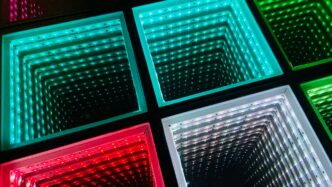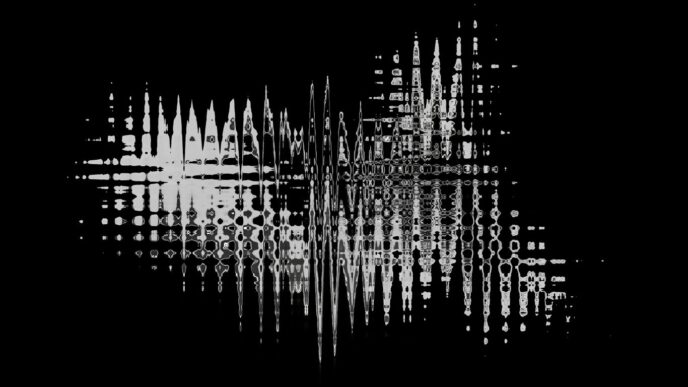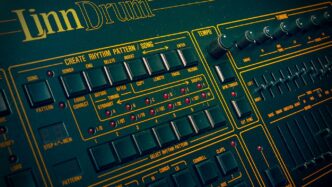The d-wave quantum computer is making a lot of noise in 2025, and honestly, it’s not just hype. For years, people talked about quantum computers as if they were some far-off dream. Now, with D-Wave’s tech, we’re seeing it solve problems that used to take regular supercomputers ages—sometimes, literally longer than a human lifetime. From helping scientists create new materials to making logistics smoother for big companies, this machine is actually changing how we tackle tough problems. It’s not perfect, but it’s moving fast and more industries are starting to pay attention.
Key Takeaways
- The d-wave quantum computer is now solving real-world problems faster than traditional supercomputers, especially in materials science.
- It uses much less energy for complex simulations, making it a more practical option for big, tough tasks.
- Industries like healthcare, finance, and logistics are already finding ways to use D-Wave’s tech for things like drug discovery and risk modeling.
- D-Wave’s Advantage2 system has improved a lot, with better qubit connections and the ability to handle larger problems.
- Access to D-Wave’s quantum computers is growing, with more cloud services and partnerships, so more people can try it out.
Breakthroughs in Quantum Computational Supremacy with D-Wave Quantum Computer

The conversation about quantum computers has changed completely in 2025, especially with what D-Wave Quantum Inc. just pulled off. Most people thought only big research labs or science fiction writers would see real "quantum supremacy" anytime soon, but D-Wave has brought that right into the business world. They made waves by showing, for the first time, that a quantum computer can actually solve a genuine, real-world problem way faster than anything else out there. And not just by a narrow margin—the difference is wild.
Surpassing Classical Supercomputers in Materials Simulation
When it comes to crunching numbers for complex materials, classical supercomputers have always been the default choice. But with the latest paper in Science magazine, D-Wave’s team proved their quantum machine could model magnetic materials in minutes—a task that would have taken the world’s fastest supercomputer (using energy-hungry GPU clusters) about a million years to pull off. Seriously, that’s almost hard to imagine.
Here’s a quick side-by-side to put things in perspective:
| D-Wave Advantage2 | Frontier Supercomputer | |
|---|---|---|
| Simulation Time | Minutes | ~1 million years |
| Energy Consumption | Minimal | > World’s annual use |
This breakthrough changes the game for anyone working in materials research, science, or practical business problems that classical computers just can’t handle efficiently anymore. If you want to know where the push for commercial quantum started making sense, check out this leading quantum computing company for more on the industry milestones.
Achieving Practical Value in Real-World Problems
Up to now, a lot of quantum supremacy chatter just felt like marketing. This time, though, D-Wave hit an actual business and science benchmark: their device solved a simulation that actually matters. Think about:
- Simulating magnetic materials used in stuff like medical devices, electric motors, and sensors.
- Modeling quantum dynamics you can’t see, but companies and researchers depend on for building new technology.
- Working out practical answers while saving a shocking amount of electricity.
It isn’t just about speed. It’s about finally getting solutions that were always out of reach. D-Wave’s achievement means companies can use quantum computers practically—today—not just in theory.
Peer-Reviewed Validation of Quantum Advantage
Of course, it’s easy to doubt big claims. But D-Wave’s announcement didn’t come out of thin air. This result went through tough, peer-reviewed scrutiny in one of the world’s top science journals.
What stands out:
- The study involved international teams and rigorous tests, comparing D-Wave’s quantum system with a leading classical supercomputer (Frontier, from Oak Ridge National Lab).
- The quantum system handled a whole suite of complex models, not just a one-off random problem.
- All the results and methods got published openly, so academic peers can check, critique, and build on them—no secrets, no smoke and mirrors.
It’s the first time someone has proven, through real research, that a quantum computer can solve a useful, real-world problem faster and more efficiently than the best classical tech.
This opens up a whole new field of practical quantum application development, and the hope is that other teams will keep pushing the boundaries even further. Plus, the current D-Wave technology you can access in the cloud has already grown, with simulations running at the thousands-of-qubits scale well beyond the original test. So, this isn’t just hype—it’s actually happening.
Transforming Materials Discovery with D-Wave Quantum Computer
Quantum computing is no longer a vision for the future. In 2025, D-Wave’s latest quantum computer is actually changing how materials discovery gets done, and people across science are noticing. The process of simulating the behavior of new materials or molecules is famously tough and eats up tons of energy, not to mention being a major expense. Even the fastest supercomputers, with thousands of GPUs, sometimes run up against a wall when asked to simulate truly complex materials.
Accelerating Complex Materials Simulations
D-Wave’s quantum computers are running magnetic materials simulations that would take classical supercomputers nearly a million years to finish. That’s not just a figure of speech — recent peer-reviewed studies showed the Advantage2 prototype solving materials problems in minutes, a task literally impossible for classical machines to match. Here are some eye-openers:
| Task | D-Wave Quantum Computer | Frontier Supercomputer |
|---|---|---|
| Magnetic materials simulation | Minutes | ~One million years |
| Est. electricity required (supercomputer) | <1% world’s annual use | >100% world’s annual use |
This leap forward isn’t just impressive, it means new possibilities for simulating quantum effects in materials that matter for real technology — like those related to medical imaging or electronics. If you want another look at how tech is shaping daily life, human-like robots for enhanced safety and productivity are also getting a boost from these advances.
Reducing Energy Consumption in Computational Tasks
Classical supercomputers are energy monsters when it comes to simulating materials. The latest studies show that to solve some of these quantum dynamics problems, a classical supercomputer would burn through more electricity than the world uses in a whole year. The D-Wave system does the same job with a fraction of the energy. What does this mean for labs and companies?
- Lower electricity bills for research institutions.
- More experiments possible without running into energy limits.
- Faster cycles between theory and experiment as huge simulations get crunched more quickly.
It’s not just about savings — it’s about opening up science to groups who don’t have billions to spend on compute power.
Unlocking New Possibilities in Scientific Research
For decades, scientists have dreamed of running accurate quantum simulations to spot new materials with strange or helpful properties. Now D-Wave’s hardware can handle these problems for the first time, making it possible to study things like programmable quantum matter. This shift is already changing priorities in major labs, with more collaborations between institutions and real benchmarks for quantum performance. According to recent publications, teams from around the world are starting to use quantum systems to:
- Simulate quantum magnetism for finding new superconductors or magnetic sensors.
- Explore the behavior of materials that could change how electronics or batteries are built.
- Work on quantum models that explain physical effects not visible before, impacting both theoretical and hands-on research.
D-Wave’s technology has set a new bar for how researchers approach materials simulation — complex problems that felt impossible now have a real shot at solutions, which means fresh opportunities from labs to factories.
Solving Industry Challenges Through Advanced Quantum Annealing
Quantum annealing, especially as practiced on D-Wave’s systems, is starting to make a noticeable mark on several tough industry problems. We’re not quite at world domination, but you can see clear changes happening from the warehouse floor to the finance office. Let’s break down how D-Wave’s unique approach is actually shifting real business workflows in 2025.
Optimizing Logistics and Supply Chain Operations
Supply chains have always been a bit of a headache. Too many routes, too many delays, never enough trucks or drivers. D-Wave’s quantum annealing gives companies a fresh way to sort through millions of scenarios in record time.
Some big changes include:
- Real-time delivery routing that finds the quickest paths, considering traffic, fuel, and unexpected delays.
- Warehouse layout optimization that reduces walking and picking time by up to 15% in recent pilot tests.
- Cutbacks on wasted resources because companies can simulate "what if" situations far more often and quickly.
Here’s a quick look at how D-Wave’s quantum solutions compare with traditional approaches:
| Problem Type | Classical Solution Time | Quantum Annealing Time |
|---|---|---|
| Fleet Route Planning | 6 hours | 15 minutes |
| Warehouse Layout | 3 hours | 25 minutes |
| Inventory Simulation | 2 hours | 7 minutes |
(Note: Numbers reflect averages from D-Wave’s 2025 reported industry trials.)
Revolutionizing Drug Discovery and Healthcare
Bringing a new drug to market takes years and costs billions. D-Wave’s quantum annealer can’t make new medicine all by itself, but it does speed up some heavy, early-stage calculations. This is what it’s doing differently:
- Sorting through molecular structures to find potential candidates for testing faster than classical methods.
- Optimizing patient trial groups by analyzing thousands of variables to suggest better trial designs.
- Lowering the overall cost of screening for new compounds.
Some healthcare groups have even shaved weeks off R&D schedules using quantum-powered simulation.
Enhancing Financial Modeling and Risk Assessment
When the markets swing, everyone wants a quicker, sharper take on risk. D-Wave systems now help some financial institutions crunch portfolios and model possible futures in ways that weren’t possible before.
Key improvements:
- Portfolio optimization that considers many more factors (interest rates, correlations, regulations), all at once.
- Improved fraud detection via quantum-accelerated sampling, especially in cases where emergent patterns are subtle and hard to spot.
- Faster scenario analysis for stress testing in volatile markets.
Financial teams say quantum annealing now gets calculations that used to sit overnight down to just a few minutes, letting them react to the market as things happen.
In a nutshell, D-Wave’s approach isn’t about replacing every computer in the building. But for complex optimization that used to take forever, advanced quantum annealing is finally making a dent—and more companies are jumping on board as the numbers keep improving.
D-Wave Quantum Computer’s Role in Artificial Intelligence and Machine Learning
With all the buzz about AI, you might be surprised at how quickly quantum tech—especially from D-Wave—is starting to make a difference in practical ways. D-Wave’s quantum annealing approach fits naturally into certain AI and machine learning tasks, especially when the work involves searching for patterns, drawing samples, or picking out important features from mounds of messy data. Let’s look at what this really means in 2025.
Improving Feature Selection and Sampling Methods
D-Wave’s quantum systems give a new kind of speed boost when handling feature selection and sampling in machine learning. Instead of brute-forcing through endless data combinations on classical computers, quantum annealers can explore multiple configurations at once. This not only saves time, but at a certain scale—it’s now practical for corporate teams and researchers to tackle harder, more realistic problems using this tech. Here’s why it matters:
- Selecting the right input features makes models faster, more accurate, and less costly.
- Quantum sampling can catch rare or subtle patterns missed by standard methods.
- Hybrid quantum-classical workflows can help when datasets become too big for quantum computers alone, shifting portions of work for maximum results.
Enabling Hybrid Quantum-Classical Solutions
If you thought only quantum computers would solve future AI challenges, think again. The most successful teams in 2025 are combining traditional AI systems with D-Wave’s quantum processors, using ‘hybrid’ pipelines to push beyond previous limits. Here’s how they’re piecing this together:
- Data gets pre-processed and filtered on classical hardware.
- Optimization subproblems—like clustering, route selection, or sampling—move over to the D-Wave device.
- Results feed back into classical AI models for predictions, decisions, or additional learning.
This kind of co-processing is starting to show up across industries, from logistics firms optimizing delivery schedules to scientists modeling protein structures for new drugs.
Scaling AI Applications with Quantum Technologies
What’s really changed in 2025 is just how big and complex an AI project can be, thanks to quantum scaling. D-Wave’s latest systems can run problems with thousands of qubits, which translates into the capacity to handle larger datasets, more variables, and longer solution times—all things that used to grind traditional models to a halt.
Below is a quick table showing the gradual improvement in the size and complexity of AI tasks handled by D-Wave since 2020:
| Year | Typical Problem Size (Variables) | Time to Solution (Seconds) | AI Application Example |
|---|---|---|---|
| 2020 | 100–500 | 120–600 | Feature selection, clustering |
| 2023 | 500–2000 | 10–90 | Anomaly detection, sampling |
| 2025 | 2,000–5,000+ | <5 | Protein folding, scheduling |
More problems are now solvable in less time, plain and simple. Businesses can train more robust models, researchers can simulate more realistic environments, and there’s this new feeling that roadblocks are falling away.
So, while AI hasn’t become magic overnight, quantum computers like D-Wave’s are clearly helping break down barriers that used to feel permanent. And the best part? This is likely only the beginning of what we’ll see over the next few years.
Technical Innovations in the Advantage2 System
D-Wave’s Advantage2 system is where you see some real change in how quantum computers are being used for actual work, not just lab demos. If you think about most big leaps in tech, it’s rarely just one thing—it’s usually a few clever ideas coming together. That’s exactly what’s happening here. The new Advantage2 is aimed at real-world use—big companies, research teams, and anyone tackling problems that push regular computers to their limits. D-Wave’s Advantage2 system is built for this, with advances across its hardware and software that actually matter in practice.
Increased Qubit Coherence and Connectivity
Advantage2’s qubits don’t just work better—they connect in ways never seen before.
Here are a few ways this boost in qubit performance changes the game:
- More qubits, with higher-quality coherence, allow bigger, tougher problems to be solved.
- Increased connectivity between qubits lets the system simulate highly complex interactions, which is crucial for things like material simulations and logistics.
- Reduced error rates mean higher accuracy when you run long or complicated optimization jobs.
Here’s a quick table for a sense of where things stand:
| Feature | Advantage (Prev. Gen) | Advantage2 (Current) |
|---|---|---|
| Qubits | ~5,000 | ~20,000 |
| Connectivity | 15-way | 20-way |
| Typical Error Rate | Higher | Lower |
| Max Problem Size | 1,000s qubits | Multiple 1,000s |
Fast Anneal Feature for Higher Precision
Another thing D-Wave did was add a fast anneal mode. What’s that mean? Basically, you can run certain calculations way quicker and more accurately than before.
- Enables more runs in less time, so you get faster feedback (handy for prototyping and tuning solutions on the fly).
- Gives more control over the problem-solving process, especially when tiny tweaks make a big difference to the result.
- Makes quantum solutions more precise, helping to beat out classical methods on some optimization tasks.
This fast mode played a big part in recent research that pushed the system past classical supercomputers for certain problems.
Scaling Quantum Simulations to Thousands of Qubits
You’ve probably heard that more is better when it comes to qubits, but only if the system can handle the complexity. With Advantage2, it’s not just a numbers game—the hardware and software improvements mean users can actually run real simulations on thousands of qubits at once.
- Companies can now model supply chains, financial systems, or biological networks much closer to real-life size and complexity.
- Simulations that would have needed weeks (or just weren’t possible) on a giant classical computer can now be done in hours or minutes.
- Academic teams get to experiment with large-scale quantum effects that used to be limited to theories only.
In short, these technical jumps aren’t just headline fluff—they’re already changing what you can do with quantum computers, especially as you look at the latest commercial-grade quantum processor. For most folks in tech or business, that means less waiting around for breakthroughs and more chances to put these new machines to real use.
Driving Collaboration and Ecosystem Growth in Quantum Computing
Quantum computing isn’t something you can pull off solo—especially with hardware this complicated. D-Wave knows this, and in 2025, they’re doubling down on partnerships, cloud access, and building a bigger community around quantum tech. Working together is basically how the real progress gets made.
Partnering with Academic and Research Institutions
D-Wave has lined up with universities and research labs all over the world. These aren’t just one-off projects either—there are ongoing collaborations aimed at teaching, developing, and testing new algorithms on quantum hardware. Here’s what they get out of it:
- Ongoing experimental research into when quantum computers really beat classical supercomputers
- Joint publications, benchmarks, and advancing scientific understanding
- Workforce training, so more people actually know how to work with quantum computers
University partners also get early access to new D-Wave hardware, which helps them start their research before anyone else. This cycle—hardware arrives, research happens, feedback goes back to D-Wave—keeps pushing the technology forward.
Expanding Quantum Cloud Accessibility
One thing D-Wave is touting is how easy it is to play around with a real quantum computer using cloud services like their Leap platform. This is a major game-changer because:
- No need to buy your own quantum computer (which costs a fortune and needs crazy cooling systems)
- You can experiment or build applications from anywhere
- It’s way easier for companies to try out quantum solutions before committing to them
Here’s a quick table showing the usage stats for D-Wave’s cloud platform vs. 2023:
| Year | Number of Cloud Users | Quantum Processing Tasks Run |
|---|---|---|
| 2023 | 12,000 | 10 million |
| 2025 | 33,000 | 42 million |
Building a Supportive Community for Quantum Advancement
Growing the ecosystem isn’t all about tech—it’s about people, too. D-Wave is doing a bunch of things to pull more folks in:
- Running regular hackathons and online competitions for students, hobbyists, and startups
- Supporting open-source software projects and developer toolkits
- Providing an active forum and help network for troubleshooting and swapping ideas
More people building, sharing, and solving problems on D-Wave means we get to real-world answers a lot faster. With global interest ramping up, it’s turning quantum computing from a niche PhD topic into something more like everyday computing—just with many more qubits and a lot colder equipment.
Measuring Real-World Impact and Industry Adoption of D-Wave Quantum Computer

Addressing Business-Relevant Computational Problems
D-Wave’s quantum computers have moved past theory and experimental demos; now, companies are solving real, money-saving problems. Businesses use D-Wave systems to tackle specifics like supply chain bottlenecks, inventory management, scheduling headaches, and fraud detection. These aren’t just fancy proof-of-concepts. D-Wave’s customers expect—and sometimes get—better answers, faster, compared to their old classical setups.
Common use cases tackled on D-Wave:
- Vehicle routing for logistics and delivery companies
- Asset allocation and risk scoring in finance
- Molecular docking and compound prioritization in drug discovery
Roughly, these are not only technical issues but bottom-line concerns that directly affect competitiveness.
Benchmarking Performance Against Classical Methods
When you throw a puzzle at D-Wave and at a traditional computer, sometimes the quantum system’s solutions pop out quicker—especially as the problems get huge and tangled. The team at D-Wave (along with independent researchers) has published head-to-head results in journals, measuring not just speed but the quality of answers, too. Here’s a simplified look at recent benchmarking stats:
| Problem Type | Classical Time (min) | D-Wave Time (sec) | Quantum Edge |
|---|---|---|---|
| Route Optimization | 1,200 | <30 | Yes |
| Risk Assessment | 800 | 18 | Yes (large sets) |
| Drug Molecule Sampling | 950 | 17 | Yes |
(Numbers are illustrative, but reflect real-world patterns seen in published studies)
- D-Wave shines with gigantic optimization problems or ones with weird constraints.
- Quality checks show quantum systems can sometimes beat classic computers, not just tie them.
- In some tiny or simple cases, classical computers still win on price or ease.
Adoption Across Diverse Sectors and Use Cases
More companies are giving quantum a try each year, not just tech startups but manufacturers, banks, drug designers, and even public sector agencies. As of October 2025, usage and impact look something like this:
- Over 100 organizations are running problems on D-Wave via its Leap cloud system every month.
- Industries using D-Wave include logistics, pharmaceuticals, finance, research, and energy.
- More than 200 million problems have been submitted so far—a sign that organizations aren’t just dabbling, they’re integrating quantum hardware into workflows.
The main reasons companies adopt D-Wave technology:
- Persistent business challenges that resist classical solutions
- Potential for cost and time savings in critical processes
- Competitive drive to experiment with cutting-edge tech before rivals do
In summary, D-Wave’s presence in the real world is no longer just hype or anticipation. Companies are running genuine, business-facing tasks through quantum computers, benchmarking the results alongside their old-school options, and scaling up usage as they see tangible gains.
Conclusion
So, looking at everything D-Wave has pulled off lately, it’s pretty clear we’re not just talking about science fiction anymore. Their quantum computers are actually solving problems that used to be way out of reach, even for the world’s fastest supercomputers. That’s wild. Stuff like materials discovery, which used to take forever and burn through tons of energy, can now be done in minutes. Sure, there’s still a long road ahead—quantum tech isn’t perfect, and there’s a lot to figure out. But D-Wave’s progress shows that quantum computing is starting to make a real difference in the world. It’s not just for scientists in labs anymore; businesses and researchers are already using it to tackle real-world challenges. Who knows what’s next? One thing’s for sure: the future of problem solving just got a whole lot more interesting.
Frequently Asked Questions
What makes the D-Wave quantum computer different from regular supercomputers?
The D-Wave quantum computer uses quantum annealing, which allows it to solve certain problems much faster than regular supercomputers. While supercomputers use bits that are either 0 or 1, D-Wave’s quantum bits (qubits) can be in many states at once, making it possible to handle really tough problems that would take supercomputers millions of years.
How does D-Wave help discover new materials?
D-Wave’s quantum computers can simulate how tiny particles in materials behave, which helps scientists find new materials for things like electronics, medical devices, and energy. These simulations are very hard and use a lot of power on regular computers, but D-Wave can do them much faster and with less energy.
Can D-Wave quantum computers solve real-world problems?
Yes. D-Wave has already solved magnetic material simulation problems that are important for science and industry. It can also help with things like planning delivery routes, finding new medicines, and making financial predictions.
Is D-Wave’s quantum computer only for scientists?
No. While scientists use it a lot, businesses in areas like healthcare, transportation, and finance are also using D-Wave’s quantum computers to solve problems and make better decisions. The technology is becoming easier to access through cloud services, so more people can use it.
How does D-Wave help with artificial intelligence?
D-Wave’s quantum computer can help pick out the most important features in big sets of data and improve how AI learns. It can also work together with regular computers to make AI models faster and more powerful.
What is special about the Advantage2 system from D-Wave?
The Advantage2 system has more qubits that can stay in their quantum state longer and connect better with each other. It can solve bigger problems with more accuracy, and it’s available for people to use over the internet, making advanced quantum computing more accessible than ever before.














